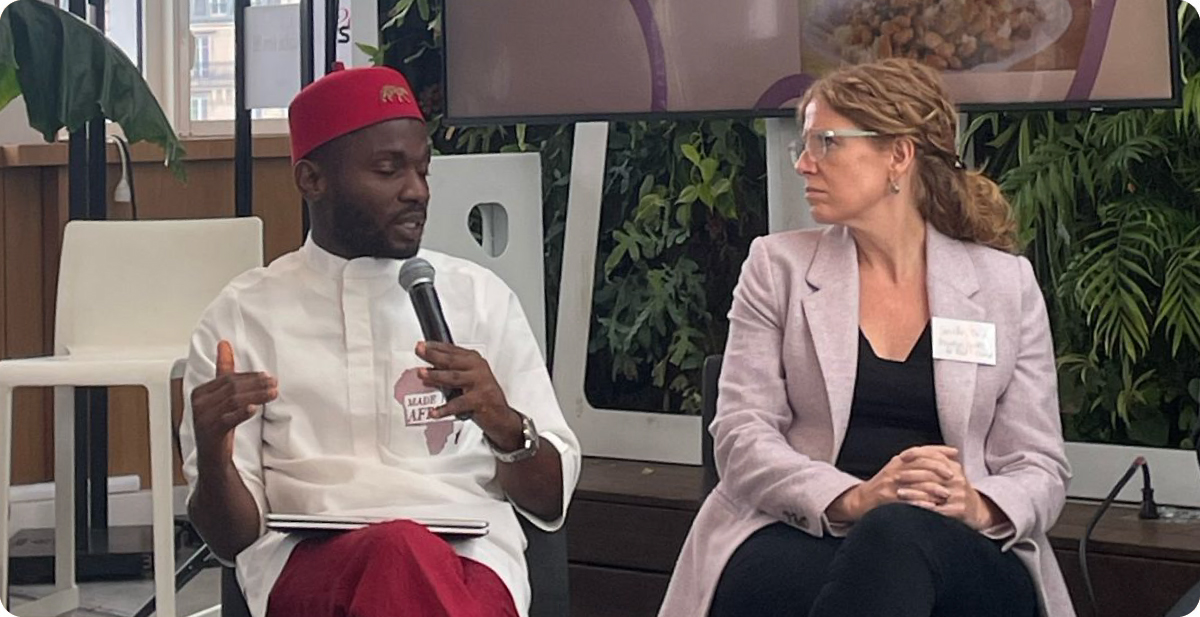April 3, 2025
Despite cuts in global development funding, March’s Nutrition 4 Growth Summit raised $27.55 billion, breaking the record set by the 2021 Tokyo summit and defying the odds. But what does this landmark event reveal about the future of nutrition?


Investing in nutrition is not only essential, but also pays off. According to World Bank data, $1 yields an average of $23 globally.
The Nutrition 4 Growth (N4G) Summit is a global event held every four years that aims to put nutrition at the heart of sustainable development. It brings together governments, civil society, development banks, and donors to make political and financial commitments toward ending malnutrition.
The 2025 Summit, held in Paris on March 27–28, was a pivotal moment for global nutrition advocacy. Although access was limited to select government and aid representatives, several side events and meetings provided valuable insights into the challenges and opportunities ahead. As GPC Director of Policy and Sustainability, I had the privilege of attending—and here’s what I learned.
One glaring takeaway from the summit was the devastating impact of cuts to international food aid by western countries, including the USA, France, the UK, and the Netherlands. A report by Nature on March 26 laid bare the crisis: reductions of $290 million in donor funding for severe acute malnutrition could leave 2.3 million children without treatment in low- and middle-income countries. This would result in an estimated 369,000 preventable child deaths per year.
The ripple effects extend beyond direct malnutrition treatment. Cuts to “nutrition-supporting programs” such as health care, agriculture, school feeding initiatives, and water sanitation could exacerbate long-term malnutrition for millions more children worldwide. The message was clear: without urgent intervention, global nutrition faces a dire future.
Despite these challenges, one recurring theme at N4G was that investing in nutrition is not only critical but also incredibly cost-effective. According to World Bank data shared at the summit, every dollar invested in nutrition generates significant returns—an average of $23 globally but as high as $81 per dollar in Ethiopia.
These returns stem from improved productivity, reduced healthcare costs, and enhanced human capital. Conversely, preventable undernutrition costs the world $761 billion annually. The bottom line? Investing in nutrition is an investment in sustainable development—and a guarantee that future generations can thrive.
In light of funding cuts, a key discussion point at N4G was how to shift perspectives on nutrition funding—particularly regarding private sector engagement. At the Nutrition: Everyone’s Business side event hosted by ATNi, experts emphasized moving away from viewing businesses solely as risks and instead fostering collaboration through mutual understanding.
This means adopting a transformationalist approach: incentivizing businesses to make nutrition-friendly investments rather than banning unhealthy products outright. For example, partnerships with food companies could encourage healthier product formulations or sustainable supply chains. A critical point emphasized at N4G was the importance of convergence across climate, nutrition and food security agendas: an easy way forward is to add a nutrition ‘lens’ to existing climate initiatives, for example, such as strengthening pulse industry value chains as part of regenerative agriculture projects. This fresh perspective on collaboration was one of my key takeaways from the summit.

A fresh collaboration perspective from N4G highlighted the importance of integrating the climate, nutrition, and food security agendas.
In a session titled From Policy to Plate: Building Bridges for Nutrition Impact, I joined a discussion on plant and protein diversification—specifically how to develop regional supply chains for pulses in North America. It goes without saying that pulses are highly nutritious and sustainable protein sources that could play a key role in addressing malnutrition globally.
The group agreed that farmers must be actively involved in this transition. To incentivize increased pulse production, they need reliable demand backed by viable supply chains. Importantly, this session highlighted collaboration across industries—not just plant protein but broader protein diversification—to drive innovation and cross-sector partnerships.
A powerful line from an article by AGRA President Alice Ruhweza and GAIN Executive Director Lawrence Haddad resonated throughout N4G: “All hungry people are malnourished but not all malnourished people are hungry.”
This underscores a critical point: global food systems must shift their focus from quantity to quality. Ultra-processed foods high in sugar and saturated fats dominate production due to their affordability and accessibility—often leaving low-income families with no healthier alternatives.
To address this imbalance, solutions discussed at N4G included rethinking agricultural subsidies, regulating unhealthy food production, and incentivizing healthy food systems through policy reforms or strengthened value chains. Big development funds can help de-risk these pivots while ensuring returns on investment.
At the Global Pulse Confederation (GPC), we represent producers, traders, brokers, processors, and researchers of one of the world’s most nutritious crops—pulses. This summit reinforced our responsibility to advocate for their potential to transform food systems for the better. The way forward is about creating holistic solutions that prioritize nutrition. The Nutrition 4 Growth Summit reminded us that, whether through policy changes or innovative partnerships across industries, we must channel resources into projects that benefit both our industry and malnourished populations worldwide.

Nutrition 4 Growth (N4G) 2025 / Global nutrition summit / Malnutrition solutions / Nutrition investment returns / Sustainable food systems / Food security collaboration / Regenerative agriculture nutrition
Disclaimer: The opinions or views expressed in this publication are those of the authors or quoted persons. They do not purport to reflect the opinions or views of the Global Pulse Confederation or its members.